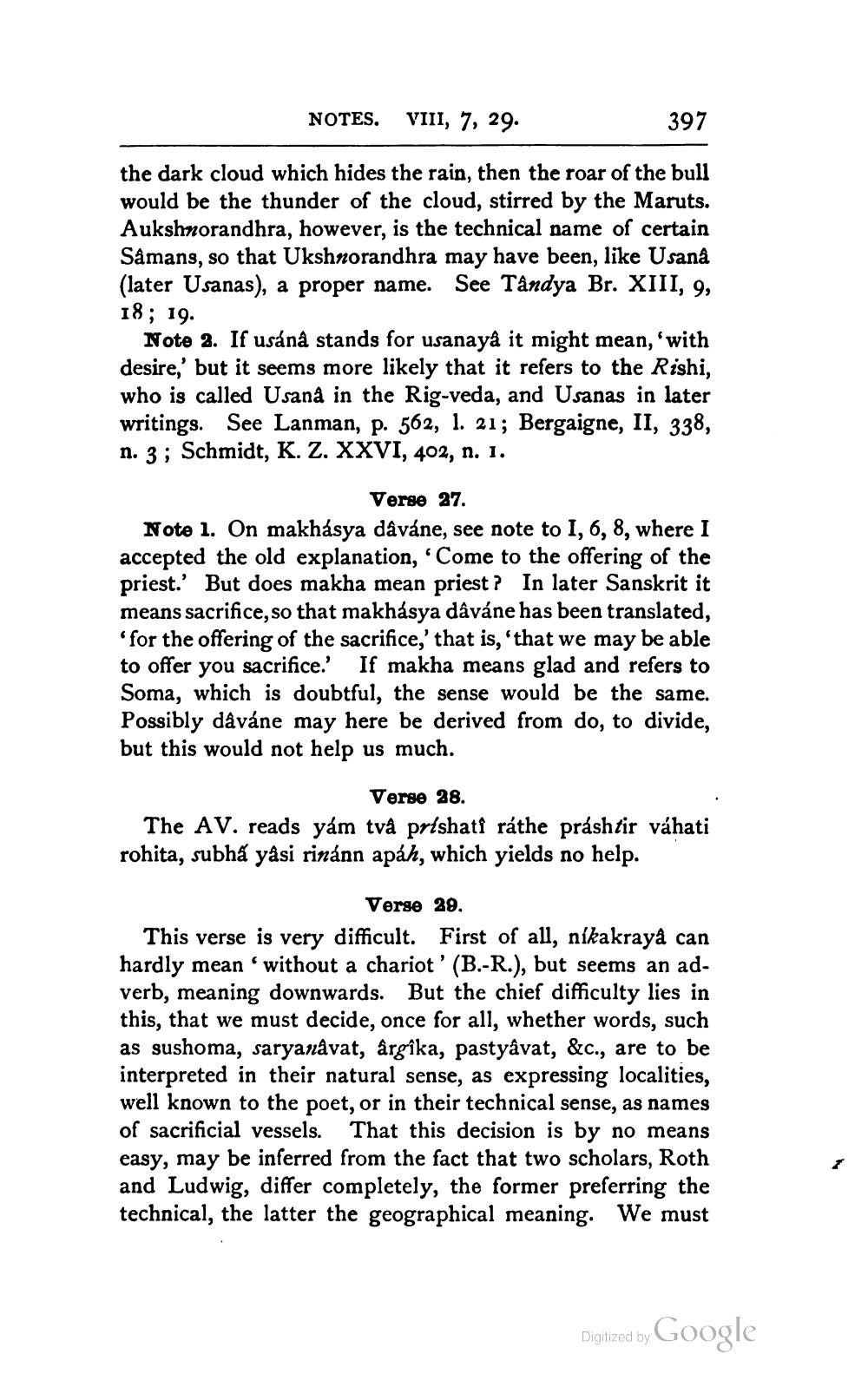________________
NOTES. VIII, 7, 29.
397
the dark cloud which hides the rain, then the roar of the bull would be the thunder of the cloud, stirred by the Maruts. Aukshnorandhra, however, is the technical name of certain Såmans, so that Ukshnorandhra may have been, like Usana (later Usanas), a proper name. See Tåndya Br. XIII, 9, 18; 19.
Note 2. If usánå stands for usanaya it might mean, 'with desire, but it seems more likely that it refers to the Rishi, who is called Usand in the Rig-veda, and Usanas in later writings. See Lanman, p. 562, 1. 21; Bergaigne, II, 338, n. 3 ; Schmidt, K. Z. XXVI, 402, n. 1.
Verse 27. Note 1. On makhásya dâváne, see note to I, 6, 8, where I accepted the old explanation, Come to the offering of the priest.' But does makha mean priest? In later Sanskrit it means sacrifice, so that makhásya dâyáne has been translated,
for the offering of the sacrifice,' that is, 'that we may be able to offer you sacrifice.' If makha means glad and refers to Soma, which is doubtful, the sense would be the same. Possibly dáváne may here be derived from do, to divide, but this would not help us much.
Verse 28. The AV. reads yám två préshati ráthe práshtir váhati rohita, subha yasi rinánn apah, which yields no help.
Verse 29. This verse is very difficult. First of all, níkakraya can hardly mean without a chariot' (B.-R.), but seems an adverb, meaning downwards. But the chief difficulty lies in this, that we must decide, once for all, whether words, such as sushoma, saryanavat, argika, pastyâvat, &c., are to be interpreted in their natural sense, as expressing localities, well known to the poet, or in their technical sense, as names of sacrificial vessels. That this decision is by no means easy, may be inferred from the fact that two scholars, Roth and Ludwig, differ completely, the former preferring the technical, the latter the geographical meaning. We must
Digized by Google




